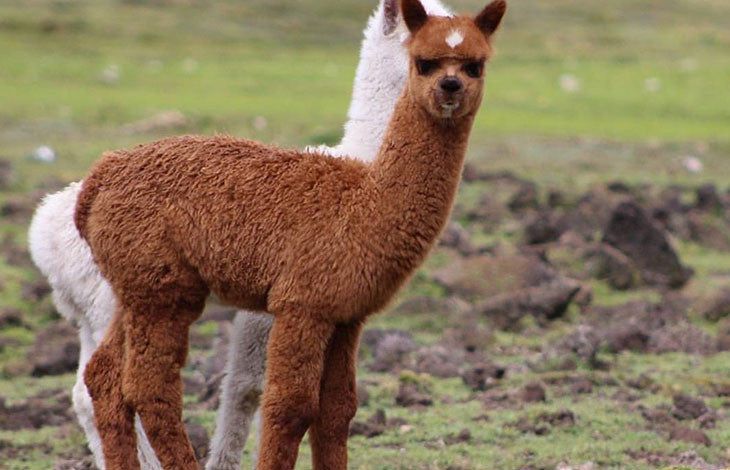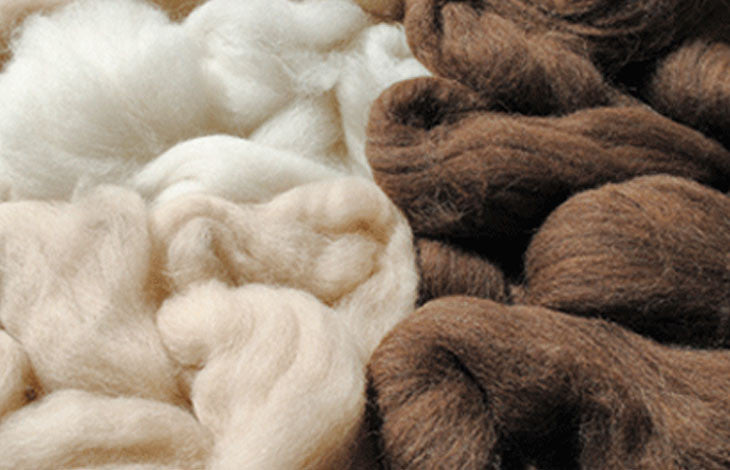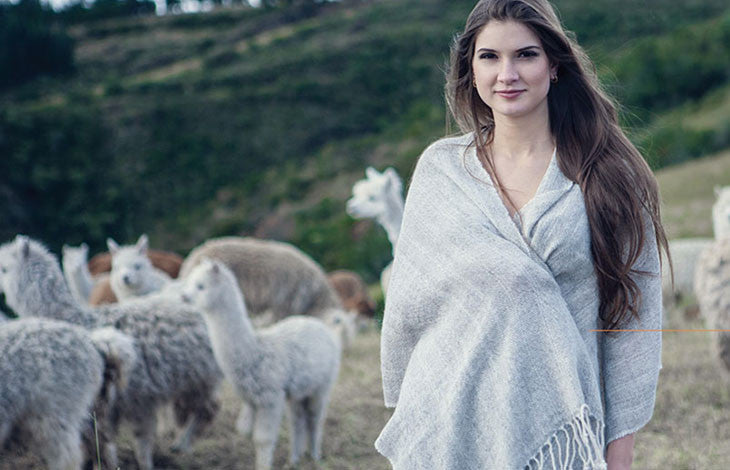Durable, functional and beautiful, alpaca fleece is the quintessential Andean fiber used to make most of the
sweaters,
shawls,
scarves,
hats and gloves Piezas offers. But for many living outside of the Andes region the prized material is still relatively unknown. Most people might assume it’s a wool-like substance sheared from llamas. But an alpaca is not a llama (although they look similar) and alpaca fiber has many advantages over wool, as you’ll soon learn.
The benefits of alpaca fleece
Alpaca fleece is often described as luxurious due to its light, soft, durable and silky natural fiber. It doesn’t give the scratchy feeling that wool does and it has no lanolin, an oil found in wool that causes an allergic reaction for some people. Alpaca fiber also has some pretty magical qualities. It’s unique thermal construction means it traps body heat in cold weather and lets your skin breath through the fibers in warm weather. This wonder fiber is also stain, odor, flame, dust and wrinkle resistant which means you never need to wash it!...unless you really want to, in which case keep reading.
As if that weren't enough, Alpaca fleece comes in 24 natural shades and is an eco-friendly, animal-friendly renewable fiber. In short, alpaca fleece looks and feels great and is easy on sensitive skin, the alpaca and the earth—good deal.
Where alpaca come from
So what is an alpaca and where does it come from? First, we must call out the obvious—that they are probably the world's most adorable-looking cuddle toy. They really do look like life-size stuffed animals. So cute! Never mind the fact they’ll spit their half-digested breakfast in your eyes if you cross them (or don’t speak Quichua).

Like the llama, the alpaca is a relative of the camel and have been bred in South America for centuries by ancient highland tribes in Peru, Chile, Bolivia and Argentina. Alpaca was once reserved for Andean royalty and was known as “The Fiber of the Gods.” Interestingly enough, the Spanish had no interest in alpaca when they invaded the continent nearly 500 years ago, probably due to lack of knowledge on how to weave the slippery and difficult fiber. Fortunately for us, the Andean highland tribes preserved the alpaca where an estimated 3.5 million live today with approximately 95% found in the southern regions of Perú. All of the alpaca garments and throws Piezas offers are made from fleece harvested in Perú and Ecuador, and many of these same items have been handwoven by indigenous communities and master craftsmen/women.
Processing alpaca fleece
The alpaca fiber is prized for its lightness and glossy shine. Piezas offers many items of 100% “baby alpaca” which is finer and softer than the fiber from adult alpaca. However, baby alpaca isn’t what the name suggests. More specifically, it's the first shear on a young animal. “Royal alpaca” offers even finer grades of alpaca fiber using modern breeding techniques.

The alpaca fiber is either left its natural color—ranging from a true-blue black through browns-black, fawns, white, silver-treys, and rose-grays—or dyed. One resource described a process for dying alpaca red as follows:
To dye 1 kg of alpaca wool with cochinilla (a natural red dye),
- Boil 5 liters of water in an aluminum can with 100 g of cochinilla for an hour.
- Sift and put the fiber in the water.
- Boil again for an hour and add 50 lemons cut in halves*.
- Then take out the wool and hang for drying.
*And if it doesn’t work out, you can always make lemonade
Caring for your alpaca garment or throw
So you just purchased a beautiful
100% baby alpaca throw handmade by an Andean master craftsman that will become a family heirloom and last for years to come—provided you take good care of it. First thing to know is don’t use Woolite! Seriously, even the mildest form of Woolite will be too harsh for alpaca fiber (think "human hair" when washing your alpaca garment or throw).
To clean your alpaca textile, follow the instructions below:
1. Try to use the same water temperature for both washing and rinsing in a clean tub or sink. Lukewarm water is best at about 100 - 105 degrees. Avoid using extremely hot or cold water as sharp temperature changes between washing and rinsing tend to be the most common cause of shrinkage. Plan ahead for how you’ll get the same water temperature for both washing and rinsing (two buckets transferred from the tub works). Any aggressive twisting, scrubbing or wringing will agitate the fibers and cause felting, making the fibers mat together and turn into felt, so be gentle.
2. Use a mild shampoo or baby shampoo to gently soak and squeeze the garment for 3 to 5 minutes. There may be some color bleed the first time a textile is washed.
3. Gently rinse the textile twice in clean water, squeezing any excess water and being careful not to stretch the fabric in any way.
4. Between two towels, lay the garment flat, roll it up and let it sit for a few minutes to absorb the moisture.
5. Transfer and air dry on a dry towel or use a sweater dryer rack being careful not to stretch or deform the garment.
6. Light steaming with an iron is OK.
Of course, another option is to take your alpaca garment or throw to a professional dry-cleaner.
Storing your alpaca garment or throw
Moths and other pests are attracted to dirt and body oils in fibers. So before storing your alpaca textile make sure to wash it first following the instructions above. To make sure your alpaca garment or throw is stored safely, place it with cedar chips in the storage area (or in a Spanish cedar chest in case you just have one lying around). If you want to smell like your great-grandparents did you can use moth balls, but Lavender bundles are the preferred chemical-free method for keeping moths away. Fold the garment flat (never hang) and place it in a shirt box, clean pillow case, or paper bag. Avoid using moisture trapping plastic bags, including those from the dry-cleaner as they will cause the fibers to felt. Also avoid storing alpaca next to sheep’s wool or cashmere as moths are more readily drawn to these fibers.
Lastly, enjoy your alpaca purchase knowing it will be a treasured favorite in your closet or home for years to come.


